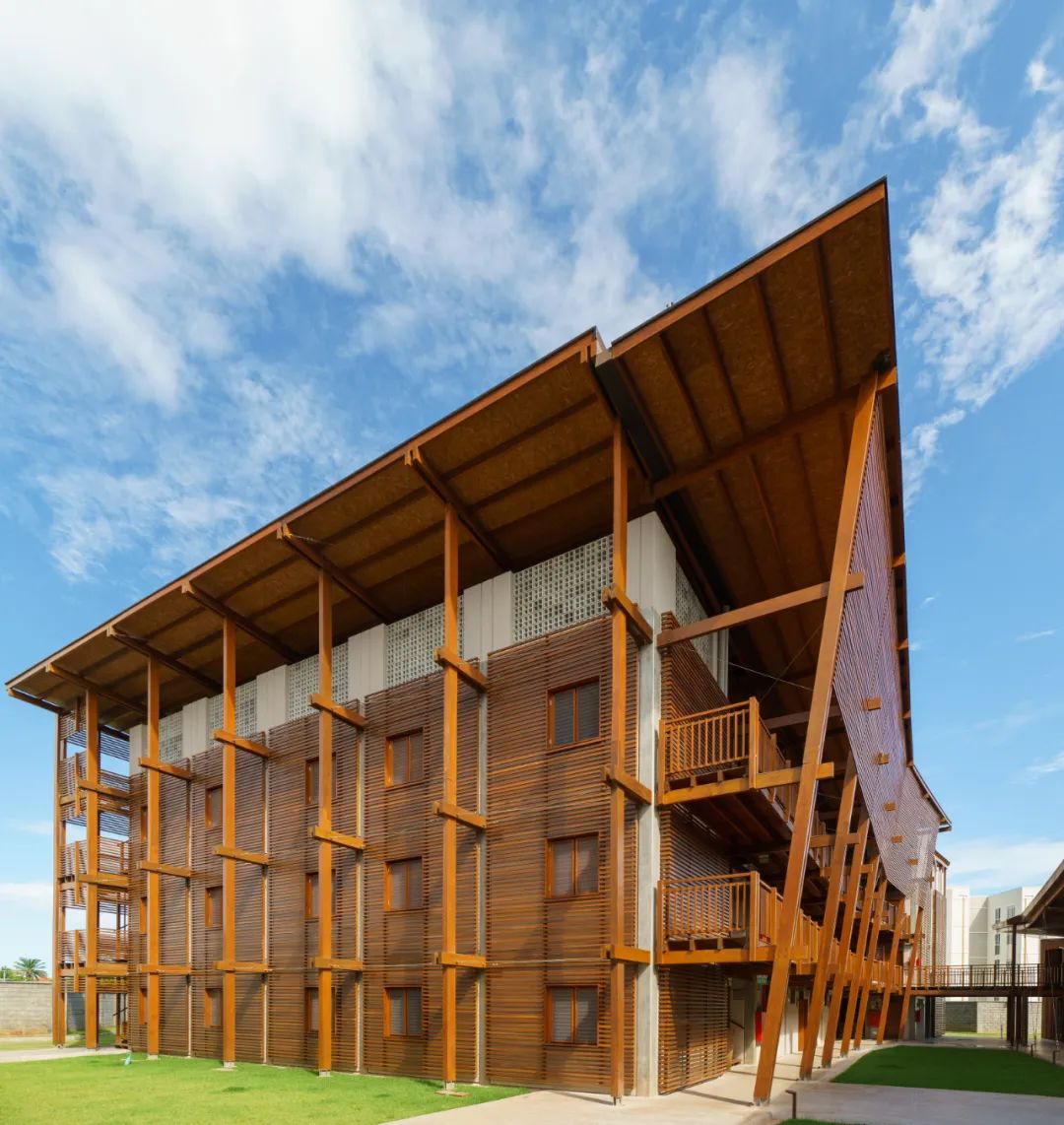
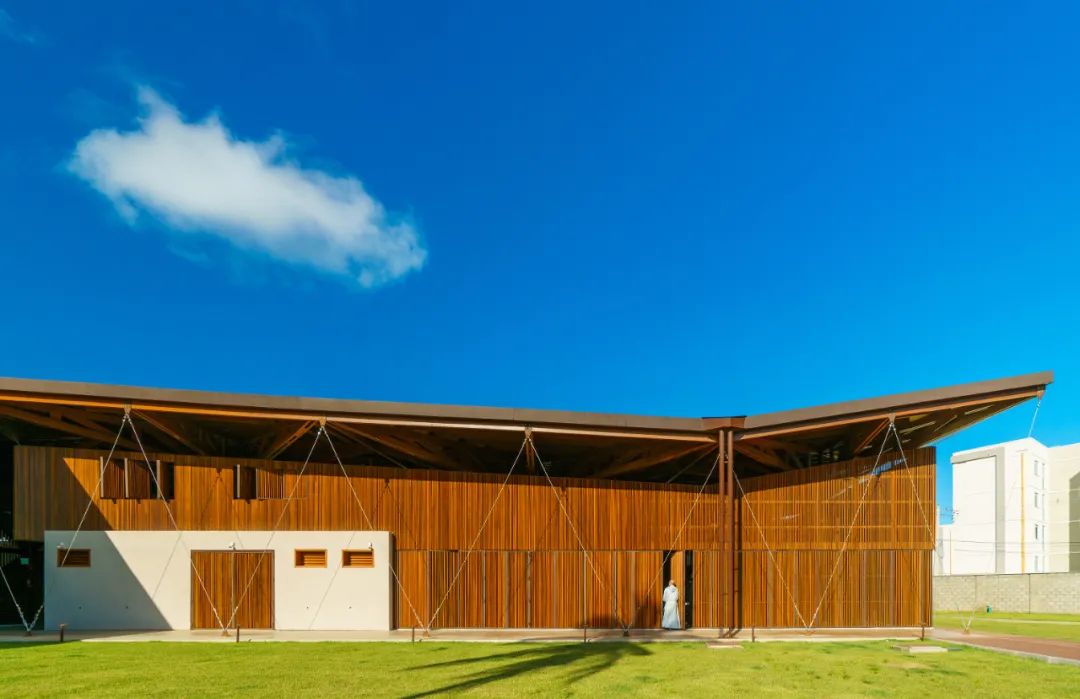
设计单位 Mixtura
项目地点 巴西
建成时间 2022年
建筑面积 5300平方米
该修道院位于萨尔瓦多最危险、最脆弱的地区之一的圣克里斯托旺附近。伯大尼方济会自2010年起就在这里,作为社会项目的一部分,尽管它位于一座临时建筑之中,但其在2012年为附近贫民窟的100多名儿童创建了一所幼儿园;而在新的修道院完工后,还会有另一所学校落成。在这样的一个地区建造一座修道院的重要性超越了其纯粹的精神功能,还意味着为一个庞大的社区创造一个安全的聚集场所。
The Convent is situated in the neighborhood of São Cristóvão, one of the most dangerous and fragile of Salvador. The Franciscan Fraternity of Bethany is there since 2010, albeit in a temporary structure, and in 2012 it created a kindergarten for more than 100 children from the neighboring favelas, as part of a wider social project that after the completion of the convent will see the realization of a school. The importance of creating a convent building in an area like this goes beyond its purely spiritual function: it means creating a safe meeting place for a very large community.
▲ 项目视频 ©Mixtura
基于对整个修建过程的长期参与,我们能够更加专注于这个具备复杂功能的项目。该项目满足了与客户的生活方式有关的各项要求,包括宗教祈祷、款待客人、兄弟会活动等;并结合了该地区气候和社会条件的需求。设计部分分别在意大利和巴西两地完成,以便我们充分地理解客户的精神信仰,以及他们在这种特殊背景下创建修道院的意义。
The design of the new convent took place through a long-time participatory process which allowed us to focus on a complex functional program that combined the requests related to the lifestyle of the clients, religious dedicated to prayer, hospitality and to fraternal life, with the needs deriving from the climatic and social conditions of the site. The design took place partly in Italy and partly in Brazil, to fully understand the spirituality of the client and the meaning of creating a convent in such a particular context.
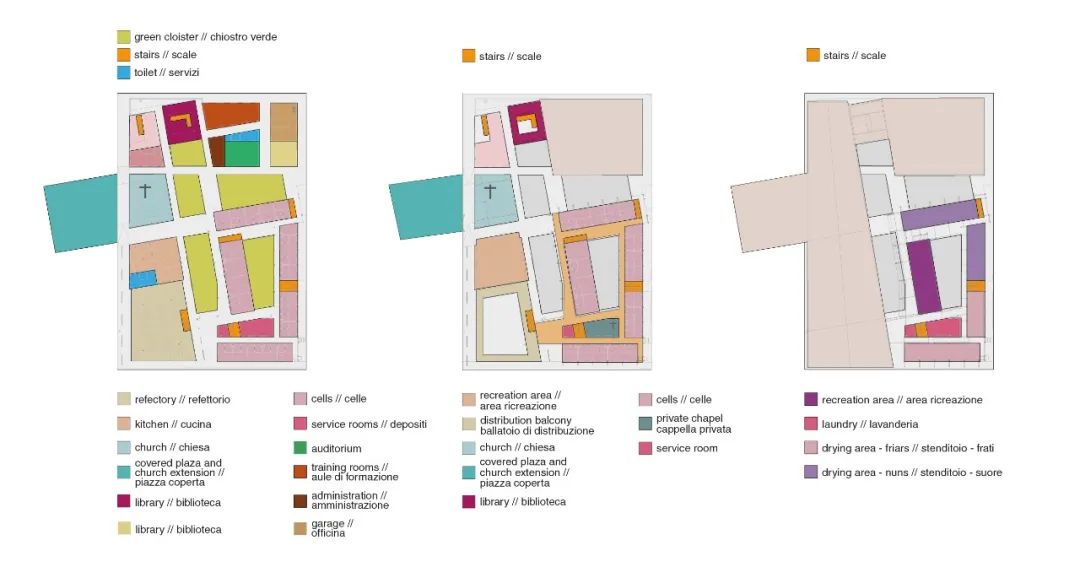


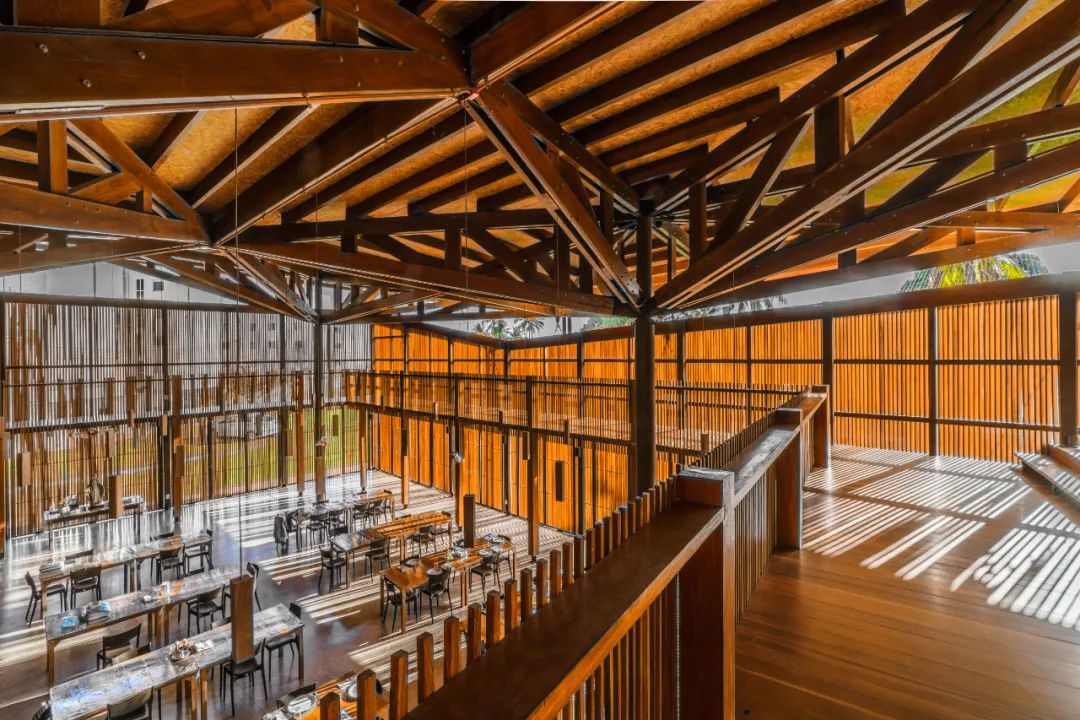
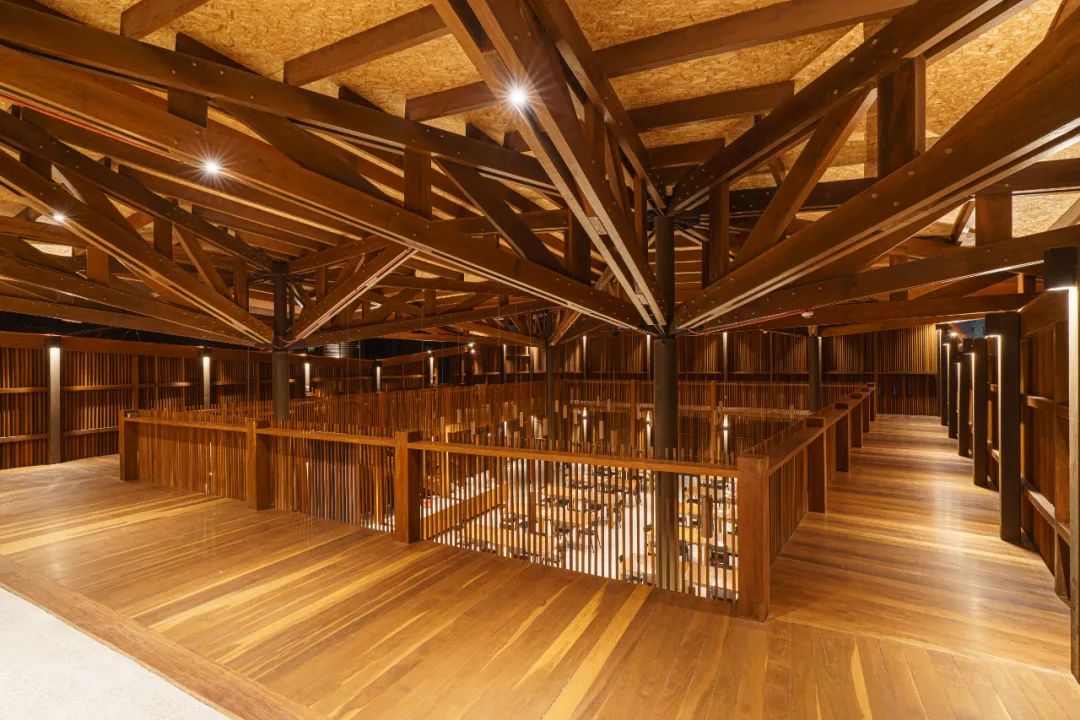
在体验过修道院的生活方式之后,我们理解到围绕一天的规则来组织空间的重要性,这些规则由个人祈祷和集体分享两部分组成。与此同时,亚热带的极端气候也影响着人们的生活方式。由于建筑物中没有设置机械空调系统,因此设计时有必要考虑遮阳和避雨的功能,也需要保证空气在建筑中的流通。
Living the life of the convent we understood how important it was to organize the spaces around the rules that mark the day, rules made up of individual moments of prayer and moments of sharing, but as the same time how the often-extreme conditions of the subtropical climate, influence the lifestyle. Since the building would not have had mechanical air conditioning systems, it was necessary to offer protection from the sun and shelter from the rain but at the same time leave the air to flow between the buildings.


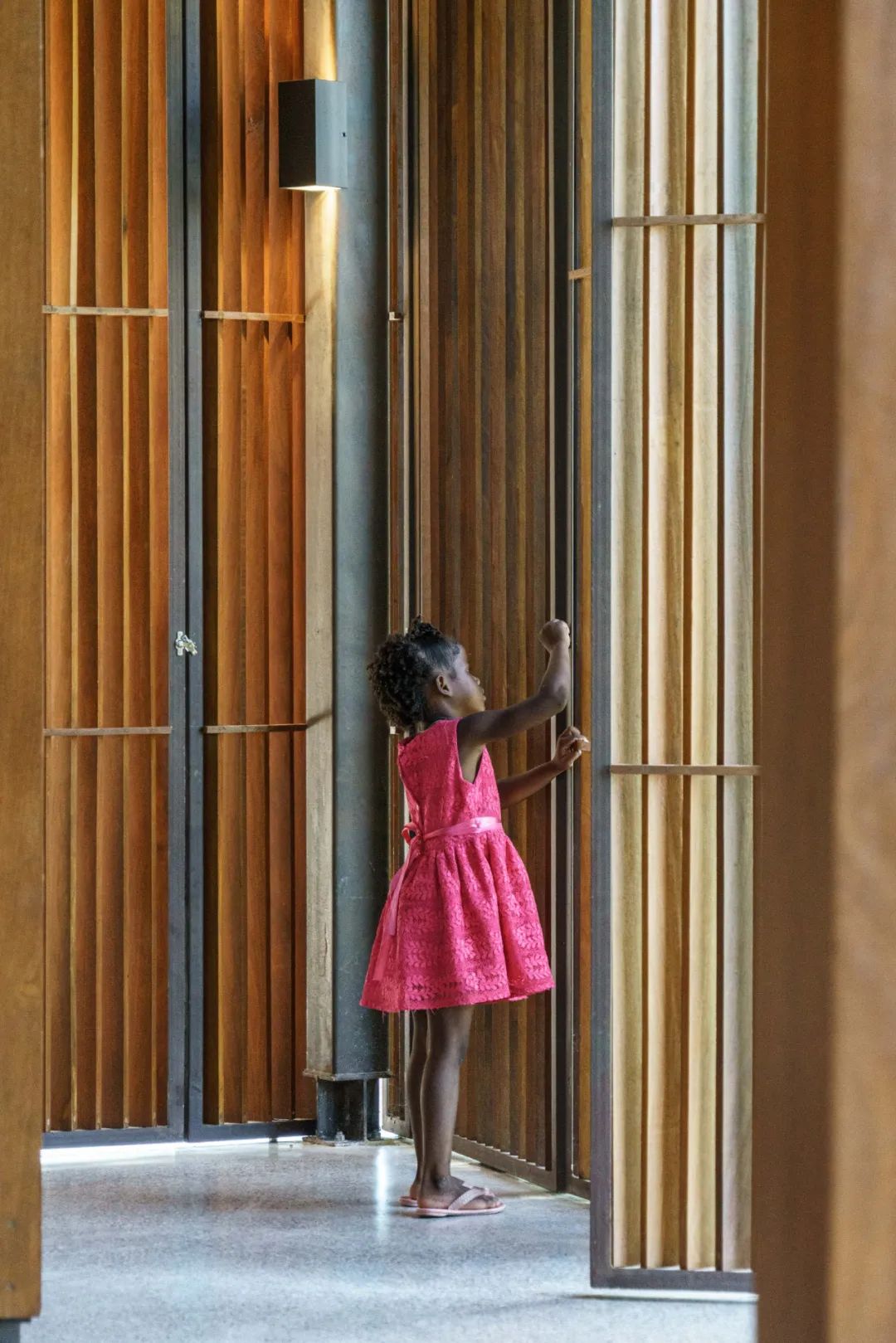
由于这是一座宗教建筑,它也需要体现所有光顾的信徒的信仰价值。这是一个不断发展的社区,为习惯于生活在一个高度退化和经常被边缘化的环境中的人们创造一个既特殊又熟悉的建筑,以及一个可以称之为家的安全之所。
Since it was a religious building, it was clear that it should also embody symbolic values for all the faithful who would frequent it, a constantly growing community, accustomed to living in a highly degraded and often marginalized context. A special building that is familiar at the same time. A safe place to call home.



在平面上,我们重新诠释了经典内向式修道院的建筑类型,成倍增加了回廊的数量,并削弱了建筑的厚度,以便让从东侧的风可以贯穿所有的建筑和开放区域。
Planimetrically, we reinterpreted the classical introverted conventual typology multiplying the number of cloisters and thinning out the buildings to allow the wind, which constantly blows from the east, to reach all the buildings and open areas.
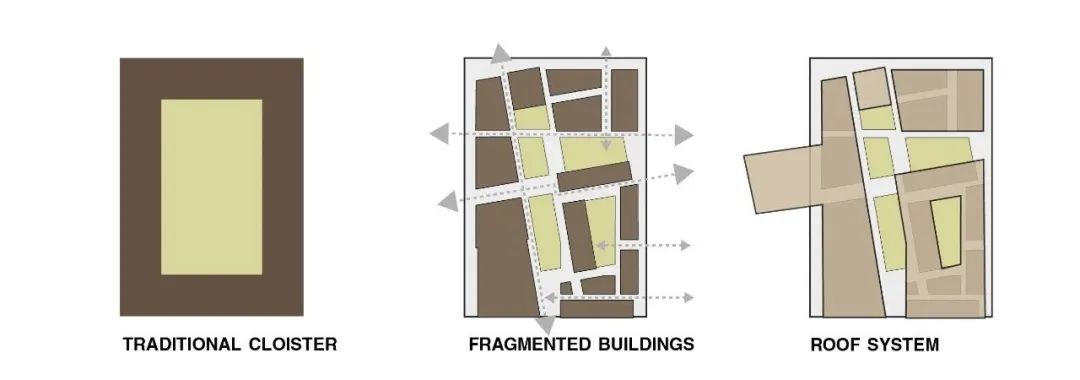

修道院的形态围绕着五个绿色回廊组成:西侧的体量面向入口和主要的市政道路,成为专门欢迎来访者的公共区域;南侧是食堂,中间是教堂,北侧是圣器室和接待大厅。这些建筑体量虽然相互独立,但设计通过一个巨大的木制屋顶将他们结合在一起,使它们具有统一的建筑语言。
The convent's morphology is articulated around five green cloisters: at west, facing the access door and the main municipal road, there is the public part of the complex, dedicated to welcoming, with the refectory at south, the church in the middle and the sacristy and reception hall at north. These buildings, although autonomous and recognizable, are ideally and formally united by a large wooden roof which gives them architectural unity.


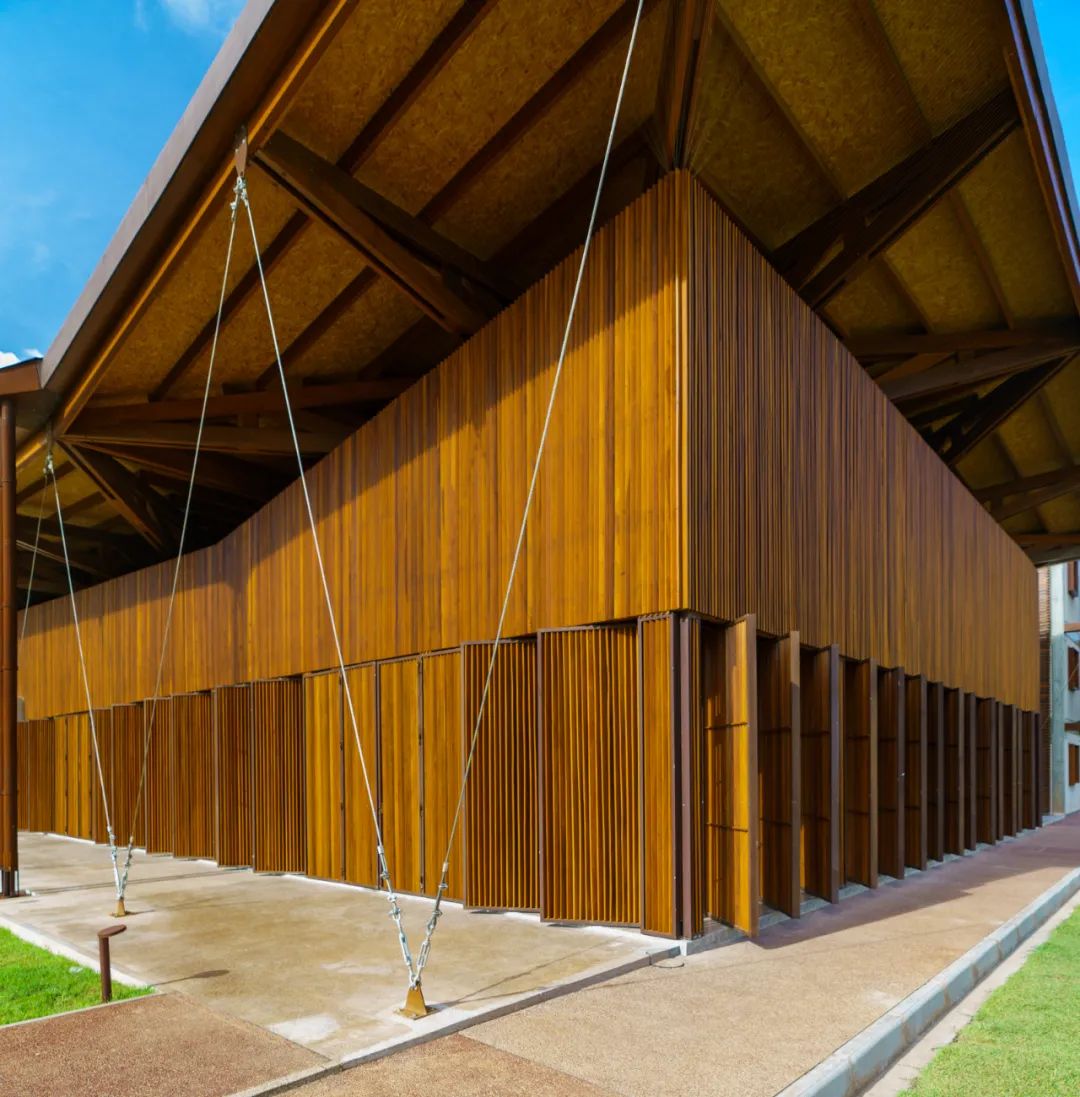

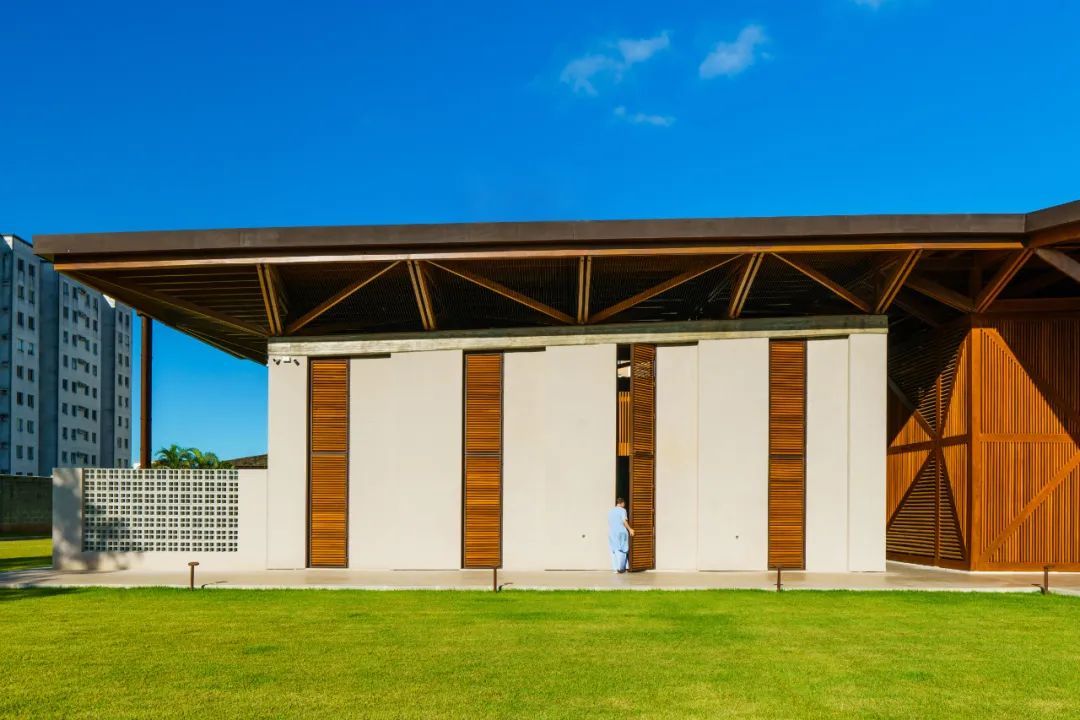
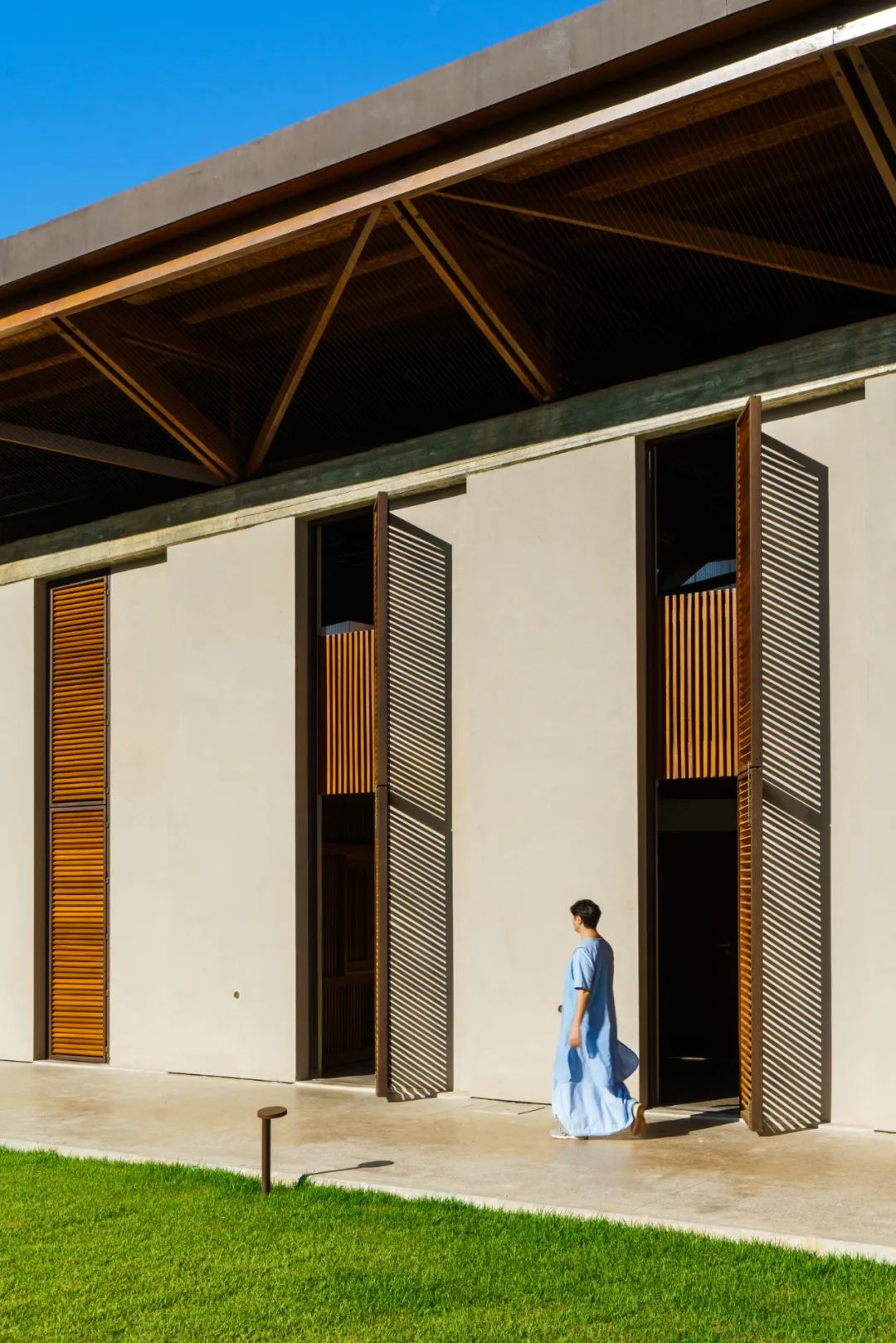

在教堂前面与大屋顶相连处,有一处带顶棚的广场,为人们提供一个可以遮挡阳光的聚集场所,并且使教堂可以容纳500多人。
In front of the chapel, in continuity with the large roof, there is a covered square, a meeting place that offers shelter from the sun during the day and allows the church to accommodate more than 500 seated people.


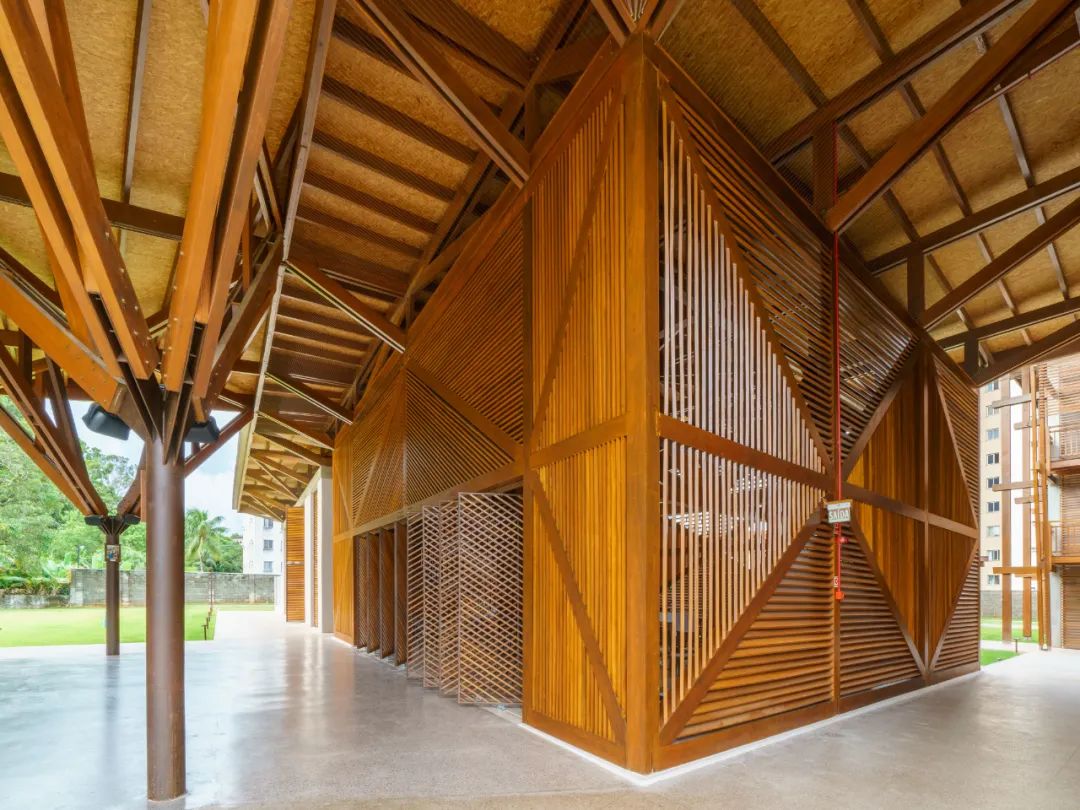
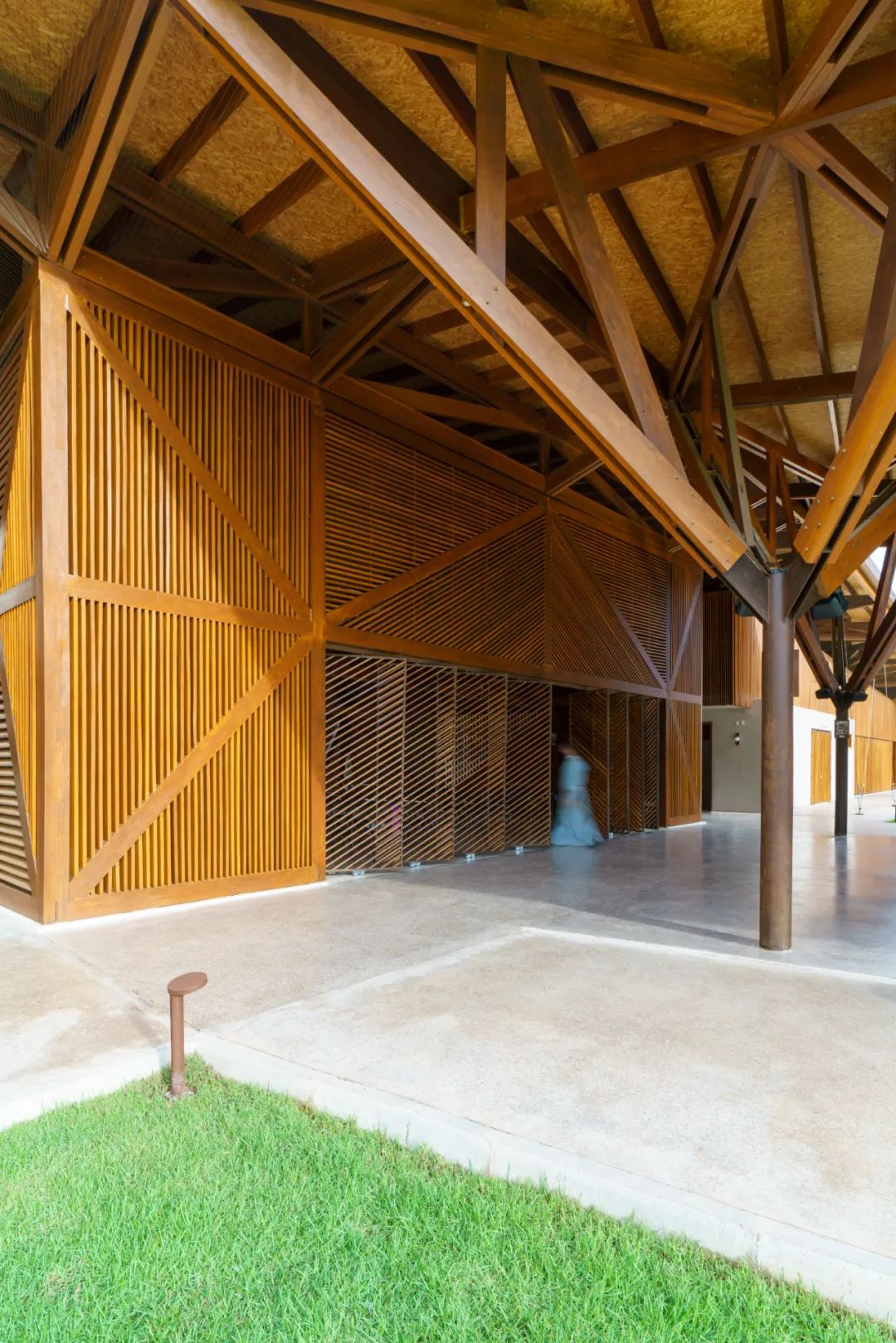
在圣器室和东北方向行政大楼之间的是图书馆,一个半透明的聚碳酸酯体块悬挂在四个巴西柚木(cumaru)柱子上,到了晚上,图书馆犹如一个发光的灯笼,人们可以清楚地看到里面的景象。
Between the sacristy and the administration buildings to the northeast stands the library, a translucent polycarbonate’s volume suspended on four cumaru’s wood pillars that at night becomes a luminous lantern that allows its contents to be perceived.
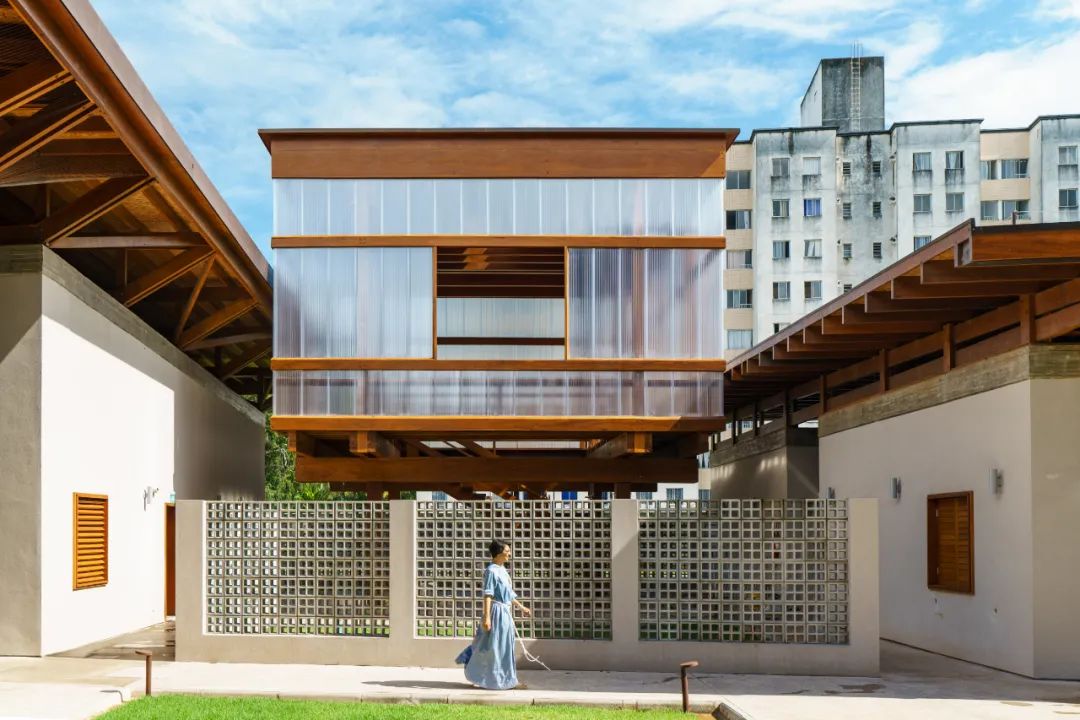
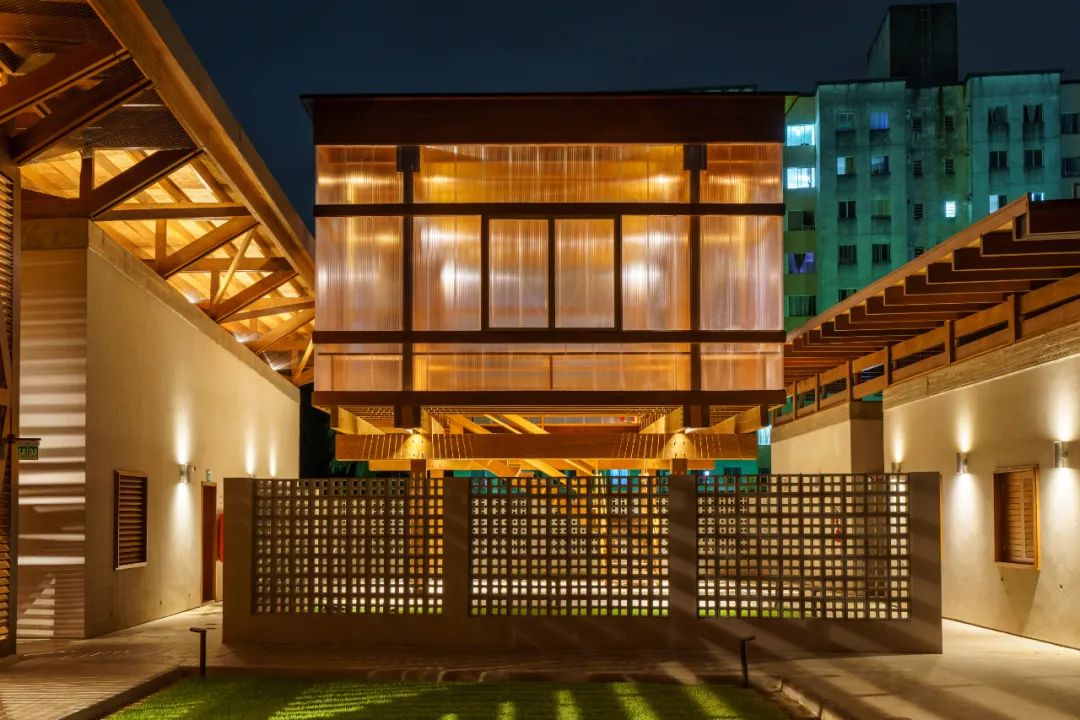

修道院的东南面是僧侣和修女的宿舍,这是唯一一个由预制混凝土结构组成的三层建筑,这在萨尔瓦多是一种非常广泛和可靠的技术。建筑的周围木制的外骨骼容纳了配电廊和木制遮阳板系统,并且起到了避免墙壁过热及遮挡雨水的作用。
To the south-east is the building that houses the cells of the monks and nuns, the only 3-floor building consisting of a precast concrete structure, a very widespread and reliable technology in Salvador. It's surrounded by a wooden exoskeleton that houses the distribution gallery and systems of wooden brise-soleil necessary to avoid overheating of the walls and to guarantee shelter from rainwater.
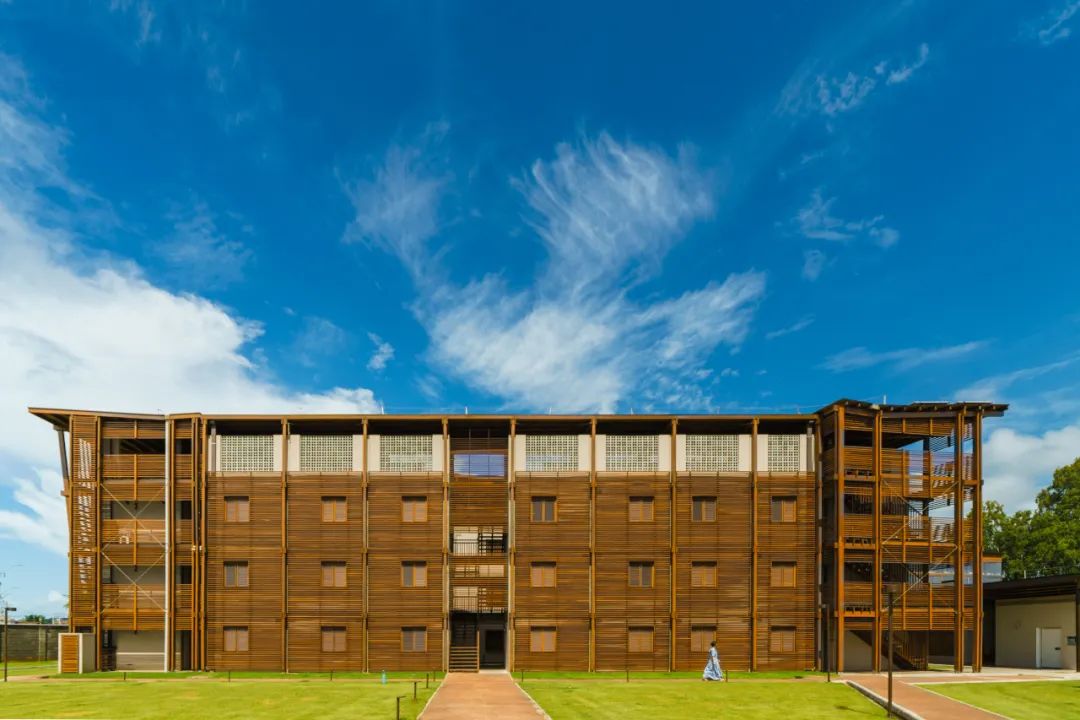
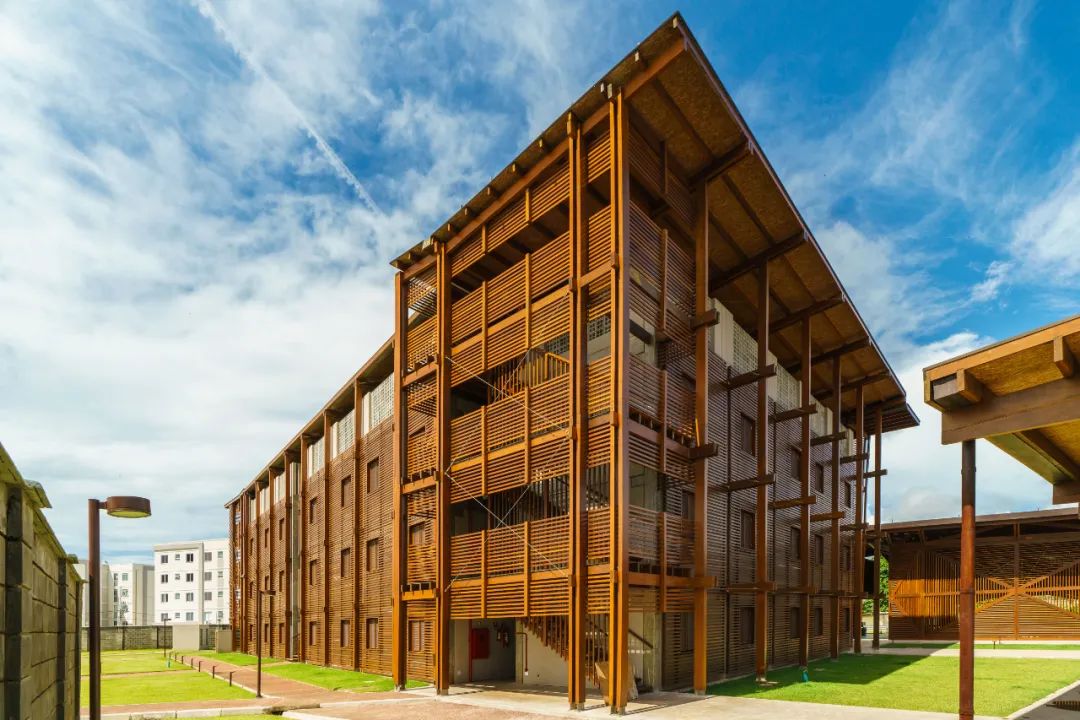

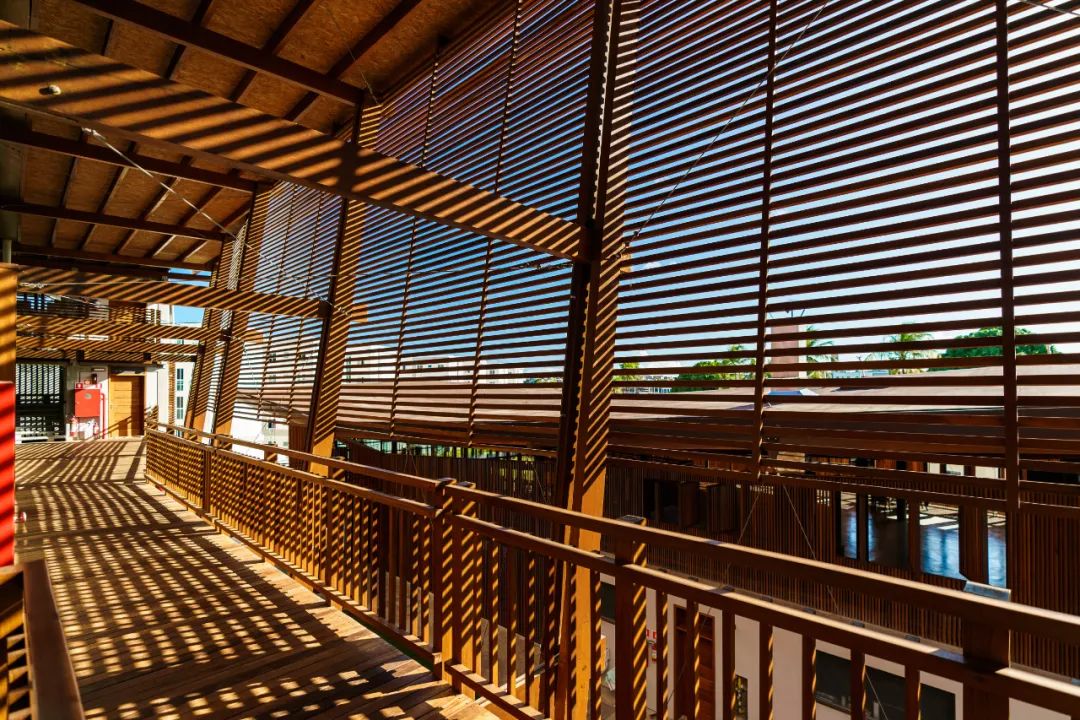

修道院中所有建筑的屋顶都是抬高的,并与建筑围护结构分离,以便室内的热空气排出,同时设计通过门窗上方可调节的遮阳板系统,保证各个单元及其他封闭区域的交叉通风。
The roofs of all buildings are always raised and detached from the building envelope to allow hot air to escape, while cross ventilation is always guaranteed in the cells and other closed areas through adjustable brise soleil systems above doors and windows.
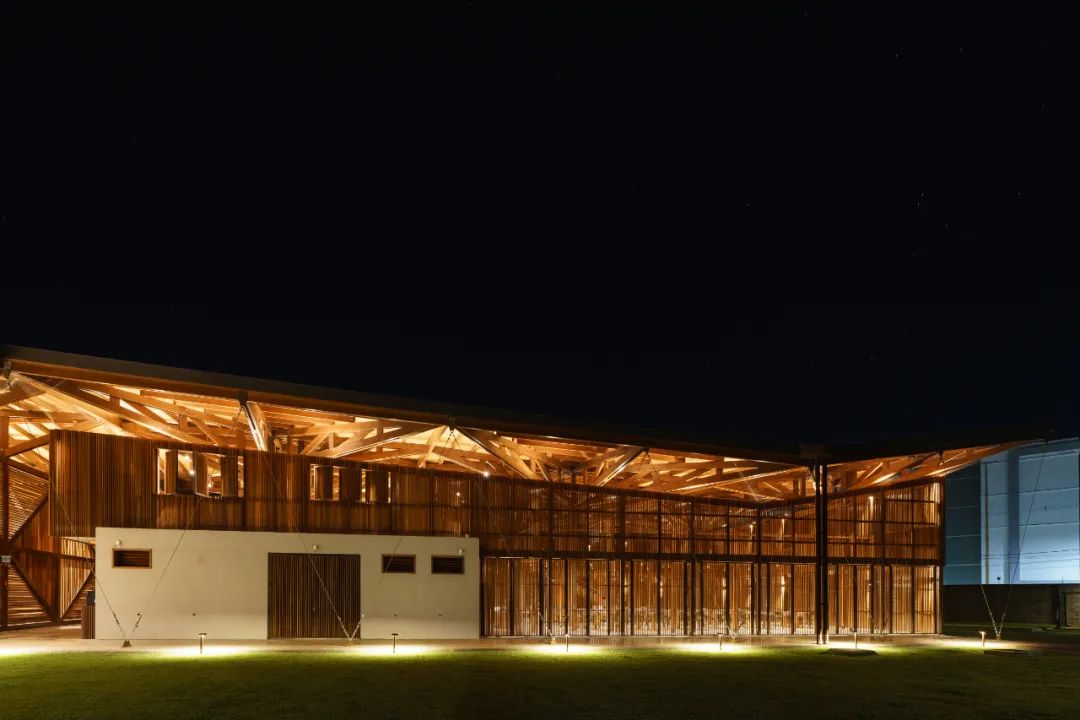
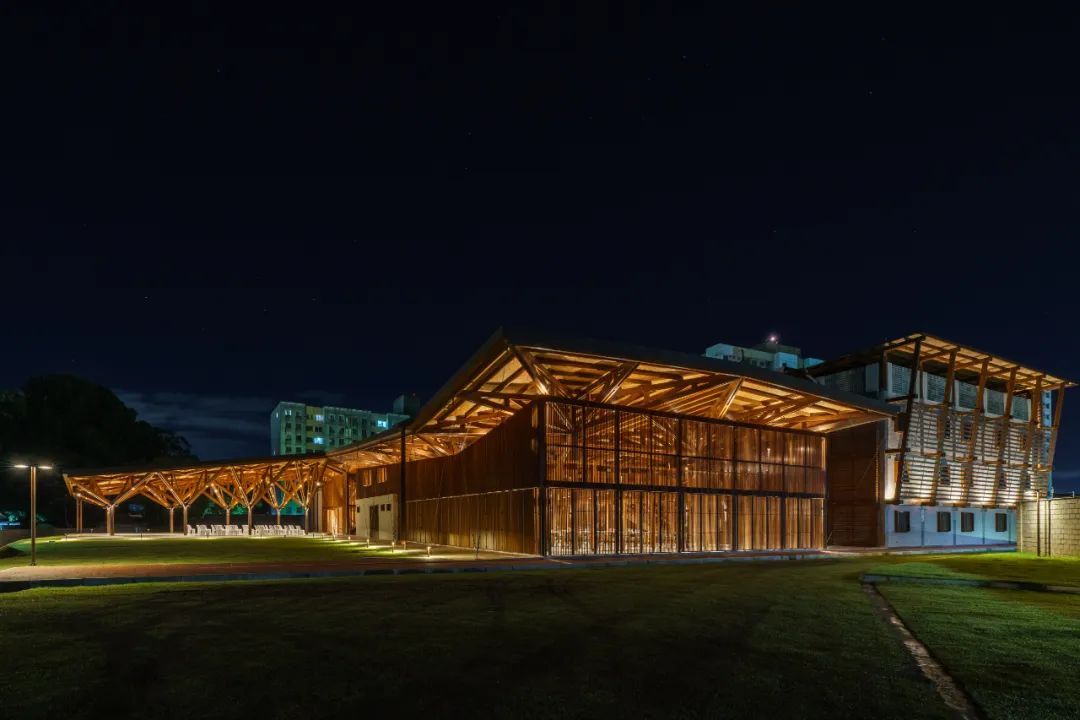
此外,由于当地工匠使用传统人工技术来冷却房间,由此赋予该项目强烈的建筑特征;项目还利用光伏板发电、热水和雨水回收,使修道院建筑群几乎能够实现能源自给自足。
The artisanal component, resulting from the use of local manpower and traditional techniques for the cooling of the rooms, gives the project a strong architectural identity. The use of photovoltaic panels to produce electricity, hot water and the recovery of rainwater, make the convent complex almost completely energy self-sufficient.

设计图纸 ▽

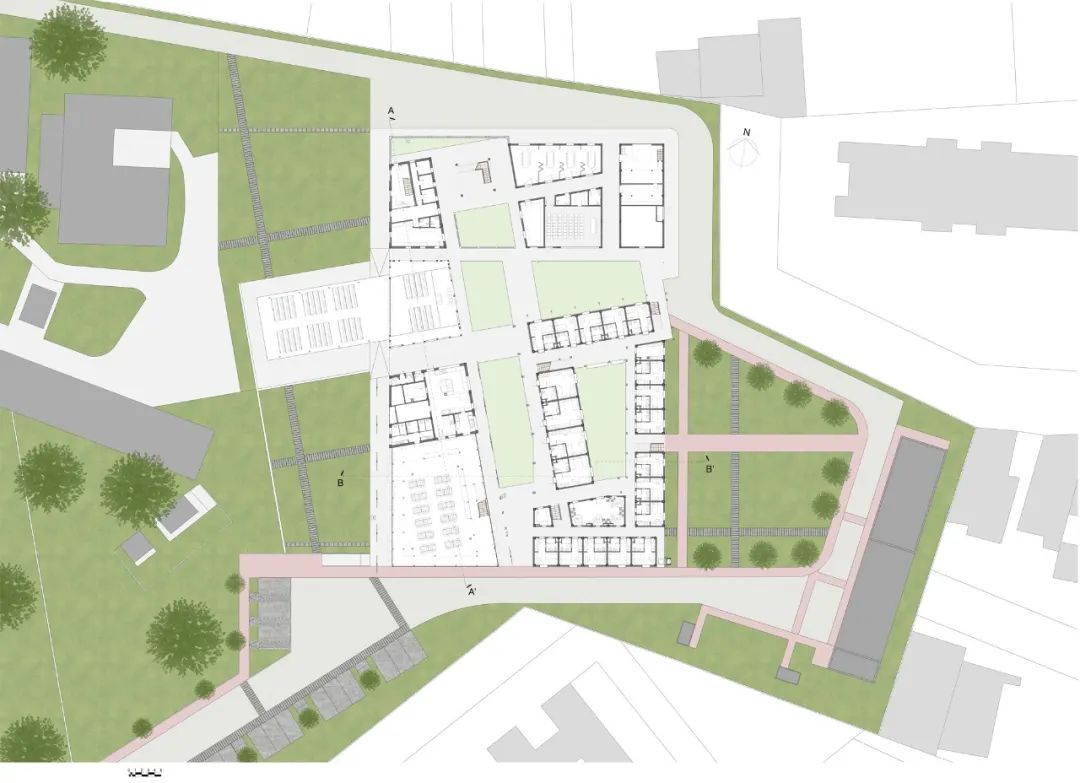

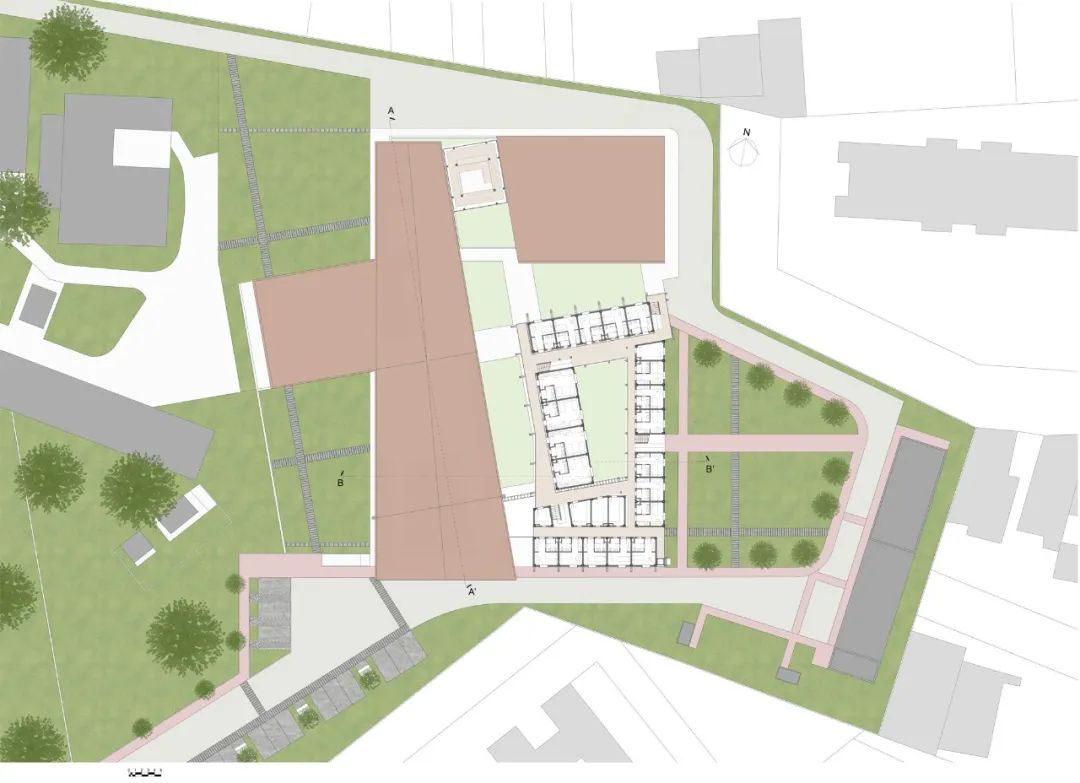







完整项目信息
Name: Convento della Fraternità Francescana di Betania a Salvador de Bahia
Author: Mixtura
Lead Architect: Cesare Querci
Tipology: Convent
Area: 5300m²
Year: 2022
Design Team: Cesare Querci, Maria Grazia Prencipe, Guido Di Croce Photo Credit: Cesare Querci
Early Stage Design: Cesare Querci, Maria Grazia Prencipe, Guido Di Croce, Alessandro D'Onofrio, Fabio Speranza, Vittoria Grifone
版权声明:本文由Mixtura授权发布。欢迎转发,禁止以有方编辑版本转载。
投稿邮箱:media@archiposition.com
上一篇:台园盆景:深圳市南山区教育幼儿园深圳湾分部 / 深圳天华
下一篇:绘造社李涵 × 爱马仕之家:《仕物别景》夏季橱窗与个展《生活模型》